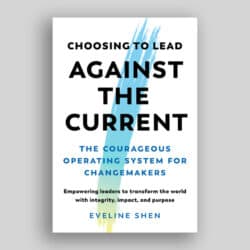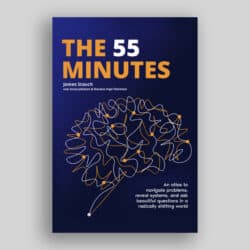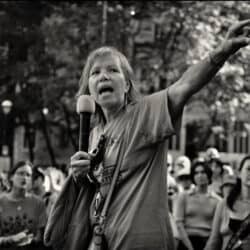What do we really know about ultra-wealthy donors? A new book reports the results of a third major survey of wealthy UK donors and will be of interest to anyone wanting to understand the motivations, fears, and expectations of their potential donors.
Rich Expectations: Why Rich People Give, by Beth Breeze and Rhodri Davies with Theresa Lloyd. Directory of Social Change, 2025; 227 pages; ISBN 978178482133 3
“Giving is its own reward.” This sentiment is affirmed by many philosophers, expanding on the classical idea that “virtue is its own reward.” It’s a phrase of common wisdom, but it’s also been backed up by research that appears to demonstrate that acts of generosity do make one happier. If this is the case, givers should be content with the happiness that their giving brings them. However, the motivations for giving are often more complex than simple personal contentment. This is even more true for the rich, those givers who can give the most, at least in financial terms. Their expectations of the rewards of giving certainly include the personal reward of happiness. But they may also include more self-interested rewards such as reputation building, social status climbing, and power over others. Giving by the rich may also be driven by the expectations of others, who look to them to fulfill giving obligations imposed by their privilege. The French phrase “noblesse oblige” captures this expectation that power and privilege entail social responsibility, expressed through acts of charity or philanthropy.
Yet what do we really know about the motivations and expectations of today’s ultra-wealthy donors, those new owners of power and privilege replacing an older aristocracy based on acquired rights? In the United Kingdom, a unique research effort has been going on for the last two decades to answer this question. Rich Expectations reports the results of a third major survey of 88 wealthy UK donors conducted in 2022. It follows on the results of a first survey in 2002 of 76 donors and a second survey conducted in 2012 of 82 donors. Half of the donors in the third survey also participated in the first and second surveys. This group of donors, most of whom are in the 1% of wealthiest individuals by assets, provides a remarkable portrait of evolving expectations over two decades in a rapidly changing economic and social environment and with a changing context for giving. To my knowledge, in Canada we do not have such a consistent and publicly available quantitative and qualitative database on the motivations of ultra-rich donors, although we have many research and data studies on giving trends in general and even on donor characteristics (for example, the patterns of giving among women donors).
This group of donors . . . provides a remarkable portrait of evolving expectations over two decades in a rapidly changing economic and social environment and with a changing context for giving.
The co-authors of this book are all deeply experienced researchers and advisors on UK philanthropy. They have the opportunity offered by the most recent donor survey to paint more details on the portrait of UK philanthropy, including more information on key developments over the past decade. In many respects, these trends parallel those in Canadian philanthropy. They include the growth in awareness and critique of philanthropy; calls to decolonize philanthropy; power shifting away from donors and participation in grantmaking; and debates over the timescale of philanthropy, trust-based philanthropy, and new vehicles for philanthropy such as donor-advised funds and impact investments. These structural and attitudinal trends are having an ongoing impact both in Canada and in the United Kingdom on the actions, attitudes, and expectations of rich donors.
What do we know about what such donors are thinking? The authors draw some new insights from the respondents’ answers to the survey: “Why do rich people give in the first place? What do they give to? How do they give? Who supports them? And how are they viewed?” In five tight chapters, they summarize their data findings and the views of their interviewees on these questions. The 2022 findings are compared where possible to the 2012 findings to reveal both consistencies and changes in donor motivation and behaviour.
The first question – “Why do rich people give?” – is much more complex than its simple formulation would suggest. Indeed, it is central to the authors’ exploration of the concept of “expectations.” As they put it, “the expectations held by rich people, and the expectations that we as a society have of them, mean that interest in donor motivation . . . gets to the heart of some profound questions about the character and obligation of those with wealth, the right use of money, who owes what to whom, how society should be organized and even – for the donors themselves – the meaning and purpose of their life.” The survey findings suggest not only that rich donors think philanthropy is important to them and that they are committed to it, but also that they feel a responsibility to give at least some of their wealth to benefit others. This last finding reveals a significant change from 2012 to 2022. The number who believe that wealth-holding brings responsibility toward wider society has gone from a quarter to a half of all respondents. The authors point to possible explanations for this change rooted in the social context and personal or familial values of the respondents. There is a social aspect to wealthy giving that does not have to do with enhancing personal status. These donors feel that their giving is prompted by the motive to connect with the individuals and organizations working for community benefit and to find philanthropic peers who might share their beliefs and values. They value relationships and find them personally enriching. And they want to be inspired by the people working on the world’s major challenges. The authors suggest that this may be an important expectation held by donors of themselves: “that they find it difficult to get a sense of peace unless they feel they are doing something about the problems they are aware of in the world.” This goes well beyond the idea of responsibility and speaks of a deeper need for “making a difference” or having a purpose in life.
The number who believe that wealth-holding brings responsibility toward wider society has gone from a quarter to a half of all respondents.
The authors also point to the basic importance of growing up in a family context in which “giving back” is integral to family behaviour. Children in any family pay attention to the behaviour of their parents. Rich donors are keenly aware of this, and in their interviews for the UK survey they often cite the importance of their elders modelling the act of giving. While many rich donors have not grown up in rich families, they have grown up with parents who gave time and money according to their means and who discuss their giving with their children. The habit of giving is formed early and is then more likely to be maintained in adulthood. Children may also educate and inspire their parents as they develop their own interests.
Having documented the interlocking influences that drive rich people’s giving, the authors offer a circular figure that brings together the eight factors explaining, in their view, why the wealthy give: belief in the cause, giving purpose to life, developing relationships, family upbringing, deriving personal satisfaction (and joy), feeling a responsibility, making a meaningful difference, and playing a distinct role from government. While no one factor is new, the authors have added value by assembling them around the central idea of “expectations.” Rich donors give for a mix of some or many of these factors. As the authors point out, “philanthropic motivations are far more complex and nuanced than most people realize.” Donor expectations of their engagement with giving and the expectations that others have of them need to be better understood to create the opportunity that undoubtedly exists for amplifying philanthropy.
The report provides more details on the what and the how of UK rich-donor philanthropy, which provides some useful comparisons for fundraisers and charities who care very much about these questions for Canadian donors. The UK study notes a shift over the past decade in the direction of major gifts from arts and culture and higher education to human services and health. There is also greater emphasis placed by rich donors on personal experience as a trigger for giving to a particular cause. Both these shifts may be a consequence of the greater emphasis on engagement and relationship formation, and a slight shift away from causes that are perceived to be “elitist.” When it comes to how rich people give, patterns in the United Kingdom are very similar to those in Canada. Rich donors have a variety of ways to give, whether at arm’s length through foundations or through direct individual gifts. They are also aware, and sympathetic to charities according to this survey, of the current debates around funding core costs, giving unrestricted money, putting a time limit on their endowments, and avoiding intrusive impact measuring. Slightly over half of the respondents were willing to consider or were already actively participating in collective giving. These are all encouraging signs of more responsive and flexible wealthy givers.
Could these trends be related in part to the emergence of more philanthropic advisors in the United Kingdom since 2002? The growth of a professional community of advisors, consultants, trainers, and specialized associations in the United Kingdom has occurred in Canada as well over the same period. In both countries, more researchers have added to the understanding of philanthropic roles and practices. Dedicated media in the form of newsletters, philanthropy journals, and vehicles such as blogs and videos have also amplified and accelerated the dissemination of knowledge about philanthropic practice. The authors believe that this development in the United Kingdom has been positive overall and has led to more and better giving. I would surmise that this is true in Canada as well. The UK survey indicates that philanthropy advising has influenced giving to become more strategic. However, in a slight push back, some of the rich UK donors noted that it isn’t necessary to perfect a strategy. It’s better to just get started than to wait to “get it right.” Learn by doing and take informal advice, including from children to parents and from peer to peer.
The rich donors in this survey agreed that many criticisms of philanthropic practice are reasonable and that this is a way for philanthropy to improve and to become more accountable.
A final section of the book addresses the public profile and perceptions of philanthropy in the United Kingdom and how they have changed over the last decade. Many rich donors believe that the public is more aware of wealthy philanthropists but has also grown more skeptical. They are very aware of the criticism of philanthropy as an exercise of undemocratic power. The rich donors in this survey agreed that many criticisms of philanthropic practice are reasonable and that this is a way for philanthropy to improve and to become more accountable. At the same time, many UK donors feel that the US-specific critique of philanthropic action such as overt politicization and partisanship is not applicable in the context of the United Kingdom. I believe this might also be true in the Canadian context. But there is a general unease about the use of the description “philanthropist” among UK donors that reflects their worry that this has become too associated, as the authors put it, with “certain expectations of grandiosity and paternalism.” In my view, the term “philanthropy” has not been negatively branded to such an extent in Canada and there may well be cultural and contextual differences between the United Kingdom and Canada that limit our comparison. That being said, this book offers fascinating insights into the thinking of rich UK donors and will be of great interest to all those in Canada wanting to understand the motivations, fears, and expectations of their potential donors.


